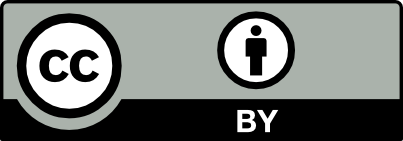Identifying the uranium concentration in soil samples from northern Basra Governorate using ICP-MS
Keywords:
Northern Of Basrah, Icp-Ms Method , Soil Samples, Oil Fields, Uranium ConcentrationAbstract
In this investigation, soil samples were taken from 25 locations in the northern Basra Governorate. The concentration of uranium was determined using the inductively coupled plasma mass spectrometry (ICP-MS) technique. Following impurity removal, they were crushed and sieved through a 75-micron sieve. The findings indicate that the uranium concentrations in the oil fields in North Rumaila and West Qurna range from 0.05 parts per million to 6 parts per million. The findings are examined and contrasted with those of earlier studies. Regarding the other regions, all of them were within this range of uranium concentration in the investigated samples. The findings are accompanied by comparisons with other research. The examined soil samples contained less than 100 parts per million (ppm) of uranium, indicating that the quality of the surface soil and fill is more significant than the mineable reserves. The uranium content in the northern Basra region was collected and evaluated, as detailed in this report. The investigation found that all surface soil samples had uranium levels below the hazardous threshold. the investigation found. According to the 1993 recommendation of the United Nations Scientific Committee on the Effects of Atomic Radiation (UNSCEAR), the uranium concentrations in the study's surface soil samples were below the allowable limit of 11.7 parts per million.
Downloads
References
T. M. Salman and A. F. Habeeb, “Estimation of uranium concentration in sediment samples of the part of the Shatt al-Arab passing in central and southern Basrah Governorate using the ICP-MS technique,” Mater. Sci. Eng., vol. 928, p. 072090, Jul. 2020. [Online]. Available: https://iopscience.iop.org/article/10.1088/1757-899X/928/7/072090.
United Nations Scientific Committee on the Effects of Atomic Radiation (UNSCEAR), Sources, Effects, and Risks of Ionizing Radiation, Report to the General Assembly with Annexes, New York, 2005.
U.S. Department of Health and Human Services, Agency for Toxic Substances and Disease Registry, Toxicological Profile for Uranium, 2013.
P. T. Todorov and E. N. Ilieva, “Contamination with uranium from natural and anthropological sources,” Rom. J. Phys., vol. 51, pp. 27–34, Jan. 2006. [Online]. Available:https://www.researchgate.net/publication/284678057_Contamination_with_uranium_from_natural_and_anthropological_sources.
A. A. Al-Hamzawi, M. S. Jaafar, and N. F. Tawfiq, “The concentration of uranium in human cancerous tissues of Southern Iraqi patients using fission track analysis,” J. Radioanal. Nucl. Chem., vol. 303, no. 3, pp. 1703–1709, 2015. [Online]. DOI: https://doi.org/10.1007/s10967-014-3682-0.
D. W. Dockery et al., “An association between air pollution and mortality in six U.S. cities,” N. Engl. J. Med., vol. 329, no. 24, pp. 1753–1759, Dec. 1993. [Online]. DOI: https://doi.org/10.1056/NEJM199312093292401.
A. E. Khater and H. A. Sewaidan, “Title of Thesis,” Ph.D. dissertation, Coll. Sci., King Saud Univ., Riyadh, Saudi Arabia, 2009.
D. K. Craig, “Chemical and radiological toxicity of uranium and its compounds,” Westinghouse Savannah River Company, Aiken, SC, Rep. WSRC-TR-2001-00331, 2001.
E. Cléro et al., “History of radiation detriment and its calculation methodology used in ICRP Publication 103,” J. Radiol. Prot., vol. 39, no. 3, p. R19, Jun. 2019. [Online]. Available: https://pubmed.ncbi.nlm.nih.gov/31189142/
A. Ahmed, T. M. Salman, and M. A. Algrifi, “The concentration of uranium-238 in soil samples from the Central Maysan Governorate determined using ICP-MS,” Health Phys., vol. 127, no. 5, pp. 565–568, Jul. 2024. [Online]. DOI: http://dx.doi.org/10.1097/HP.0000000000001846.
T. M. Salman and M. A. Algrifi, “Using the ICP-MS method, the concentration of uranium in soil samples from the Northern Basrah governorate was determined,” Al-Bahir J. Eng. Pure Sci., vol. 1, no. 1, p. 1, Aug. 2022. [Online]. Available: https://bjeps.alkafeel.edu.iq/cgi/viewcontent.cgi?article=1002&context=journal.
M. A. Algrifi and T. M. Salman, “Measuring uranium concentration in Um Qasr district, southern Iraq, in two different ways,” Appl. Radiat. Isot., vol. 192, p. 110595, Feb. 2023. [Online]. DOI: https://doi.org/10.1016/j.apradiso.2022.110595.
G. C. Y. Chan and G. M. Hieftje, “Spatial emission profiles for flagging matrix interferences in axial-viewing inductively coupled plasma-atomic emission spectrometry: Profile characteristics and flagging efficiency,” Anal. Chem., vol. 85, no. 1, pp. 50–57, Jan. 2013. [Online]. Available: https://pubmed.ncbi.nlm.nih.gov/23013258/
S. A. Durrani and R. K. Bull, Solid State Nuclear Track Detection: Principles, Methods, and Applications, 2nd ed. Amsterdam, Netherlands: Elsevier, 2013.
R. K. Kakati, L. Kakati, and T. V. Ramachandran, “Measurement of uranium, radium, and radon exhalation rates of soil samples from Karbi Anglong district of Assam, India, using EDXRF and the Can technique method,” APCBEE Procedia, vol. 5, pp. 186–191, Jan. 2013. [Online]. DOI: https://doi.org/10.1016/j.apcbee.2013.05.033.
O. Baykara and M. Dogru, “Measurements of radon and uranium concentration in water and soil samples from East Anatolian Active Fault Systems (Turkey),” Radiat. Meas., vol. 41, no. 3, pp. 362–367, Mar. 2006. [Online]. DOI: https://doi.org/10.1016/j.radmeas.2005.06.016.
N. H. Kadhim and S. S. Kadhim, “Measurement of uranium concentration in some soil samples in the Tuwaitha site in Baghdad using the CR-39 detector,” Int. J. Curr. Eng. Technol., vol. 8, no. 1, pp. 17–20, Jan./Feb. 2018. [Online]. DOI: http://dx.doi.org/10.14741/ijcet.v8i01.10880.
United Nations Scientific Committee on the Effects of Atomic Radiation (UNSCEAR), Sources, Effects, and Risks of Ionizing Radiation, Report to the General Assembly with Scientific Annexes, United Nations, 1993.
T. M. Salman and M. A. Algrifi, “Measurement of uranium concentration in Basrah soils using the CR-39 detector,” Biomed. Chem. Sci., vol. 1, no. 3, pp. 164–167, Jul. 2022. [Online]. DOI: https://doi.org/10.48112/bcs.v1i3.174.
United Nations Scientific Committee on the Effects of Atomic Radiation (UNSCEAR), Sources, Effects, and Risks of Ionizing Radiation, Report to the General Assembly with Scientific Annexes, United Nations, 1993.
Downloads
Published
How to Cite
Issue
Section
License
Copyright (c) 2025 Basrah Researches Sciences

This work is licensed under a Creative Commons Attribution 4.0 International License.







